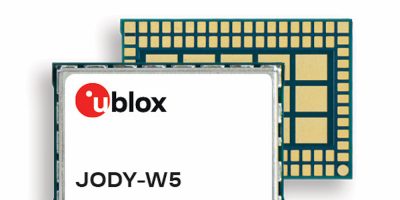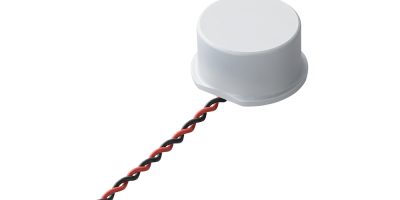In order to prevent wireless network congestion in a vehicle and enhance audio functionalities, the u-blox JODY-W5 is an automotive-grade module with Bluetooth LE Audio. It has a compact form factor and operates in temperatures up to 105 degrees C.
It blends dual-band Wi-Fi 6 and dual-mode Bluetooth 5.3 technologies, including LE Audio, and is described as both cost-effective and compact while enabling different antenna configurations.
The u-blox JODY-W5 can be used in helmet-to-helmet communication for two-wheel vehicles, EV charging solutions such as link/device configuration and data charging via an access point, telematics control and head units such as diagnostics and software updates. It can also be used for infotainment with rear seat entertainment connectivity, smartphone tethering and hands-free calling.
The module is available in two operating temperature variants, operating at up to +85 and +105 degrees C meeting Automotive Grade 2 requirements. On request, the JODY-W5 provides an LTE-coexistence filter and antenna configurations. It is pin compatible with other u-blox JODY modules for ease of migration, design flexibility and upgradability while saving time and cost.
Enhanced security features support secure boot and over-the-air firmware updates, key management, and hardware encryption for critical protocol keys with NXP Semiconductors’ EdgeLock Secure Subsystem, built into NXP’s AW611. These features reduce implementation efforts considerably said u-blox, while helping avoid costly security incidents.
“By integrating the AW611 into the JODY-W5 module, we extend our partnership with u-blox, offering a solution that balances the trade-off between the adoption of latest technologies and product cost,” said Larry Olivas, general manager and vice president, Wireless Connectivity Solutions, NXP Semiconductors.
The JODY-W5 module covers RF design and certification requirements for end devices use and applications, which can be extended globally upon request, said Sebastian Schreiber, Product Strategy, Short Range Radio, at u-blox.
The globally certified module minimises the need for specific radio testing, explained u-blox, enabling a faster time to market. The first samples will be available by the end of the third quarter of 2023.







